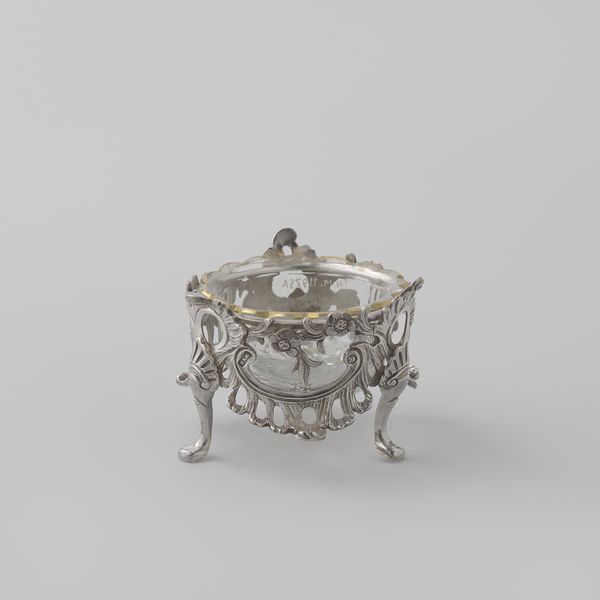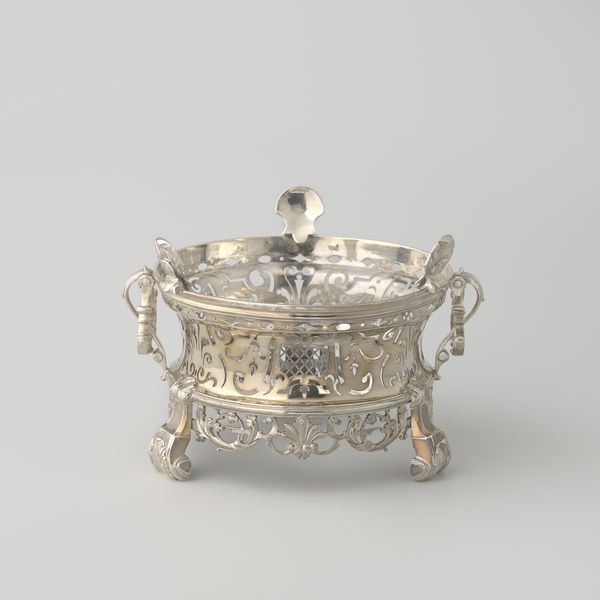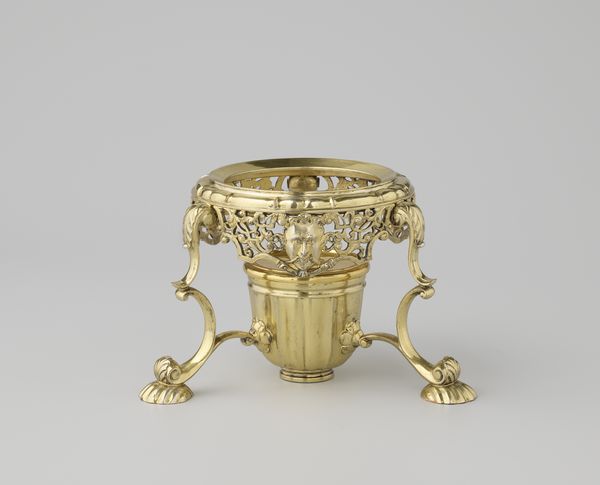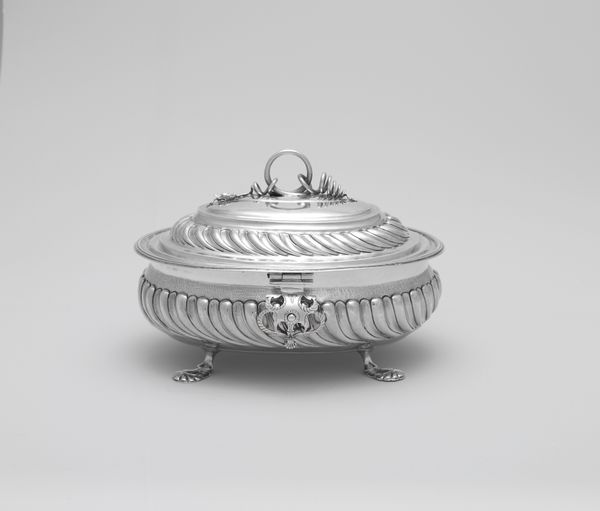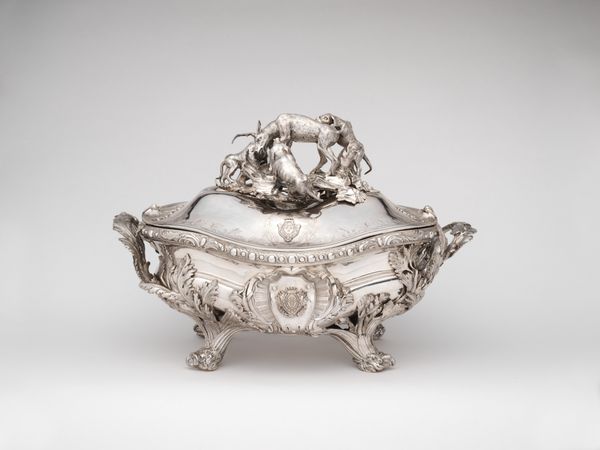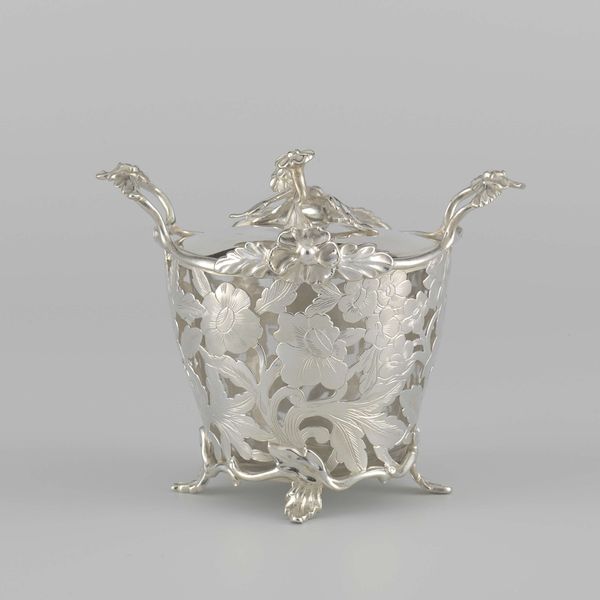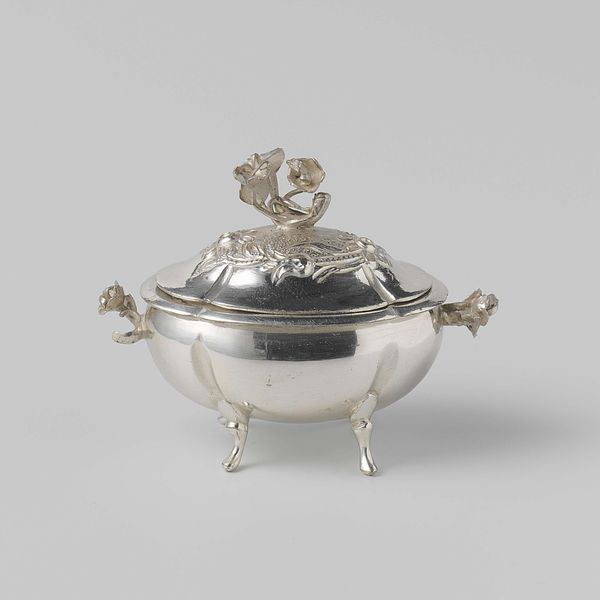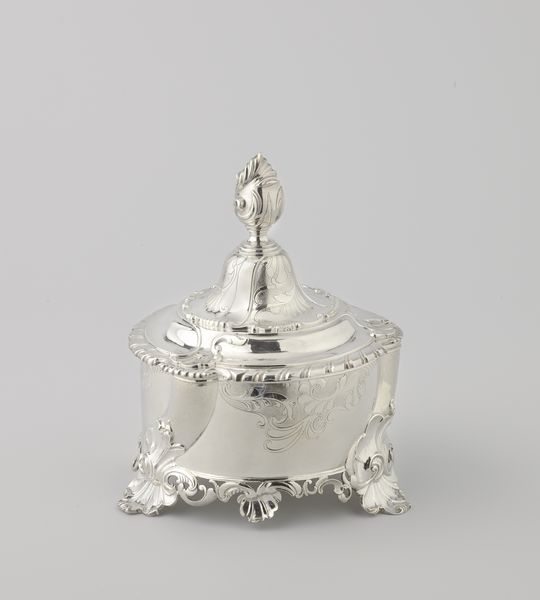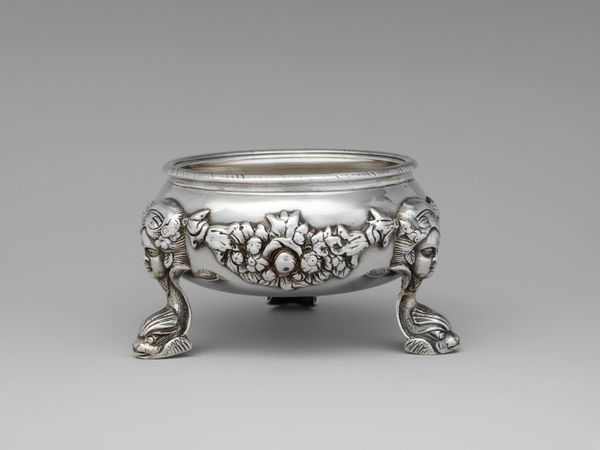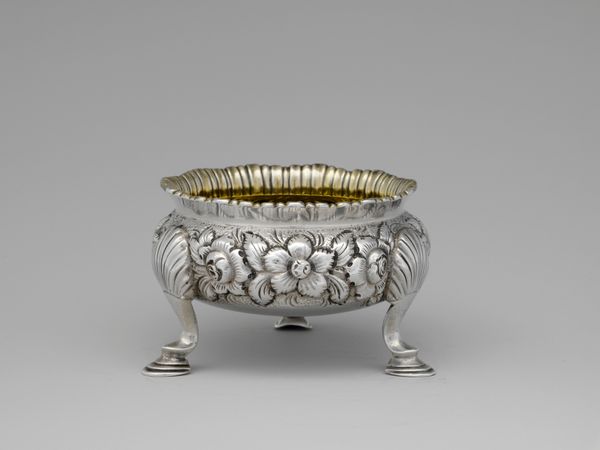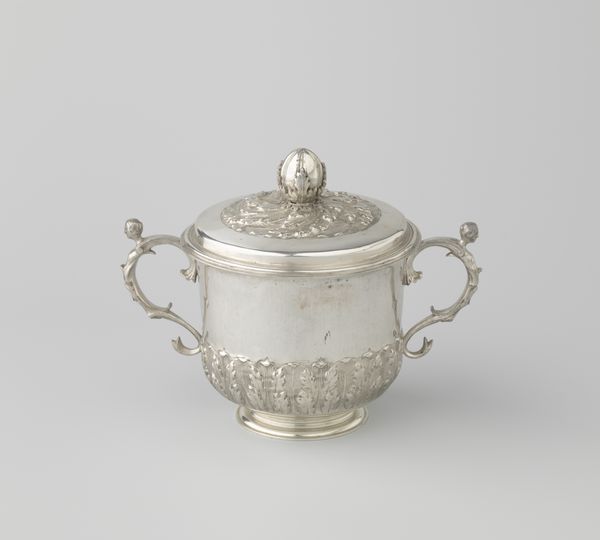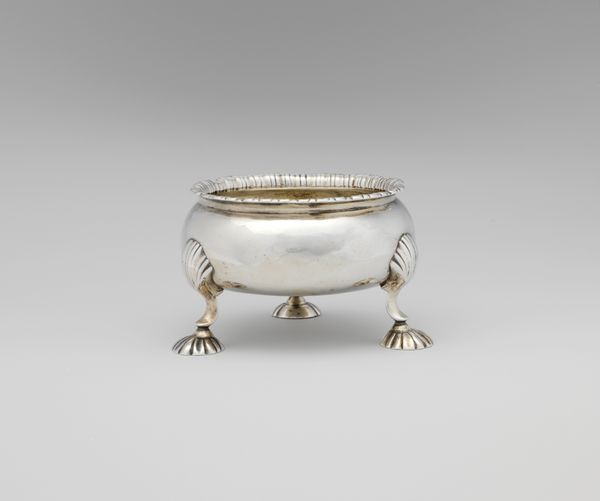
silver, metal, glass
#
neoclacissism
#
silver
#
metal
#
glass
#
decorative-art
Dimensions: height 3 cm, diameter 5.8 cm
Copyright: Rijks Museum: Open Domain
Curator: Oh, how utterly charming! It's so small and dainty. There's something almost ridiculously precious about it. Editor: Indeed. What we're looking at is the "Binnenbak van zoutvat," dating back to 1791, created by Wijnand Warneke. The primary materials are silver and glass. Curator: Salt, huh? Imagine someone needing that much fuss just to sprinkle a little salt. Did folks really care so much about seasoning back then? It must have tasted amazing if that justifies such elaborate decoration. Editor: The Neoclassical style is undeniable, evident in the symmetrical flourishes and refined elegance. Notice the legs—their gentle curvature supports not just a glass bowl, but a complex network of cast silver. Curator: They are sweet legs; animal-like but dainty. Looking closer at the body, it is also quite decorative. Is it just flowers and fanciful decoration or are they people in there? Editor: There are human figures engraved into the silver! It is faint but I can distinguish pastoral scenes with figures—evocative of the period’s fascination with idyllic rural life, mirroring ideals seen in painting and literature of the time. Curator: Makes sense... salt was perhaps a luxury and a celebration of refined taste. It's not just about function but the ritual, elevating an ordinary act. Editor: Function married with aspiration, a marker of sophistication. I’m interested by the material interplay between the hard, reflective silver and the transparent glass which gives lightness. The contrast animates it. Curator: You know, it almost makes you wish for a fancy dinner party... not for the food, but just to whip this out. Editor: So it's more than just salt, then—it’s the seasoning for conversation, for display of cultivated living. A time capsule of culinary performance.
Comments
No comments
Be the first to comment and join the conversation on the ultimate creative platform.
